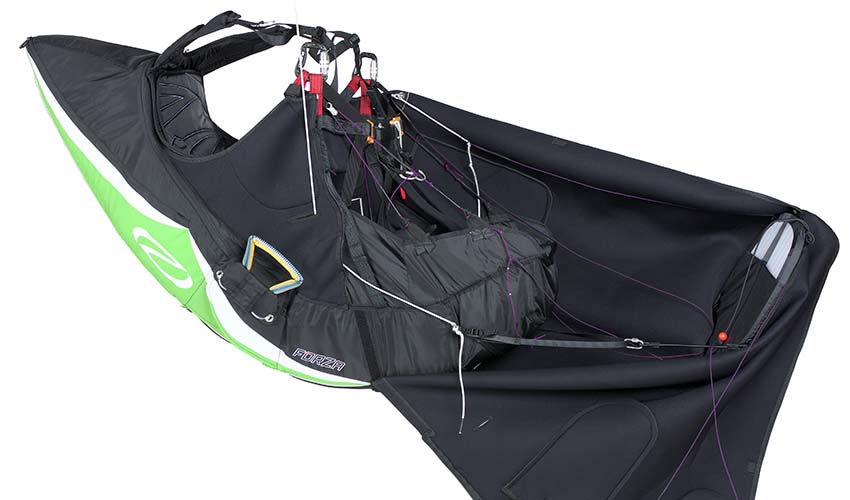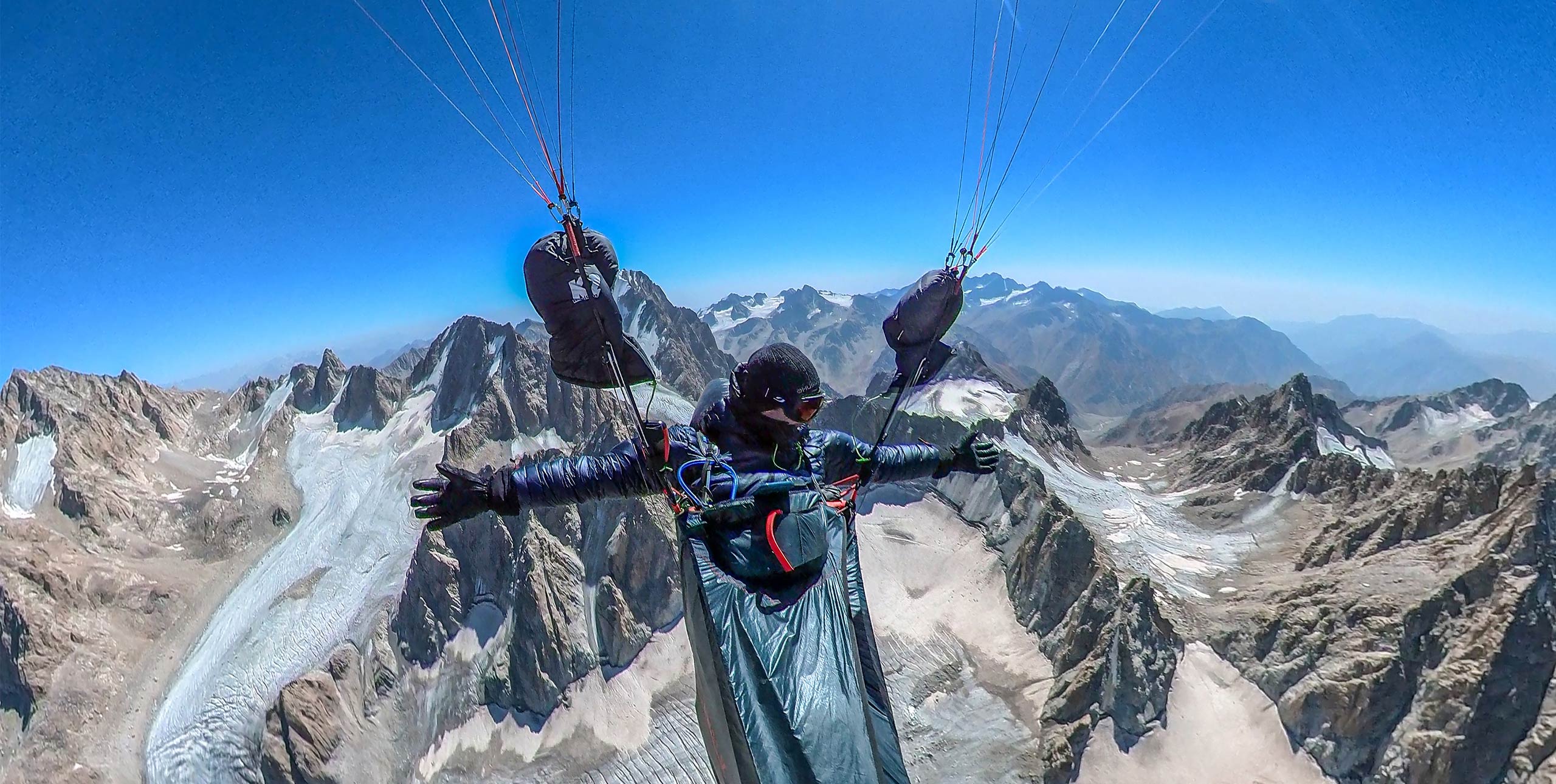
Are you a pod god? How to make the most of your harness
17 February, 2021The wrong harness choice can erode confidence and damage your flying just as much as choosing the wrong wing, writes Flyeo paragliding school owner and SIV instructor Malin Lobb. Here are a few things to consider when choosing your next harness.
If you’re making the step from seated to pod harness I would highly recommend keeping your seated harness. The stage you’re at when you buy your first pod harness is exactly the time when you want to be doing lots of top-landings, touch-and-goes and more advanced kiting techniques. These all become more difficult in a pod harness with the skirt and footboard restricting your leg movements. It is still doable but it’s more restrictive.
Keeping a basic harness that you can use for playtime will keep up your skill level and directly translate to becoming a better pilot. It also keeps your new sleek pod all shiny and ready for your XC adventures.
Are pods more dangerous than seated harnesses? This is a common question and, just like any question regarding how safe a wing/harness is, it has everything to do with the pilot.
Modern pods actually have quite an upright position for your body with just your legs outstretched, so if you bend your legs and keep your back leaning back and supported you aren’t in a very different configuration to a normal seated harness. In case of a collapse, the most important thing is that you bend your legs. If you keep your legs straight there is obviously a much greater chance you will twist.
There are two things to consider in terms of safety. First, when you get used to the pressure on your feet, and with your legs al-ways being straight, it can be difficult to bend them at times of high stress. In fact your natural instinct is to push harder, to feel more security.
So if you make the move to a pod, train yourself in turbulence to bend your legs so you are nice and compact in case you get a collapse. If you do any dynamic movements, spirals or wingovers bend your legs as well, so it becomes muscle memory to get in that position.
The second thing is, when people come on SIV courses with a seated harness they often karate kick their legs around, as they are so distracted by the manoeuvre they are not aware of what the rest of their body is doing. This puts them at just as high risk of twist as someone in a pod harness who keeps their legs straight.
So for me, pods are no more dangerous then a seated harness. The key thing when you have an incident, regardless of the harness you have, is to bend your legs and then tense the muscles so they stay put while you deal with the situation.

Hammock harnesses
Hammock harnesses are comfortable, but many pilots don’t fully understand what they will be sacrificing for that comfort. For me, the authority that comes from your hips in being able to hold and carve a turn in a thermal is really important, as is having more authority over your wing in turbulence and in controlling your wing in manoeuvres like the stall/backfly position.
You don’t see hammock acro harnesses and there’s a reason. So, unless you’re at the stage in your flying career when, in a thermal, you can fully analyse your body’s movements and also notice the small differences when you compare different harnesses, then I would just steer clear of a hammock for the time being.
Instability
If you have a lower-rated wing and an unstable harness the wing is going to take care of a lot of the movements. But as you move to a higher-rated wing your beloved harness may actually hold you back more than you think.
As the aspect ratio and power of a wing increases so does the movement of the harness. And those excessive movements can make you feel like you’re in really turbulent air when the guy next to you is flying along quite happily.
If you have a choice of more or less stability I would choose more stability every time. A harness that is too stable is annoying at worst. It can fade out useful information and you have to over-exaggerate all your weightshift to help turn, but your confidence will be intact.
On the other hand, a harness that is too unstable can make you feel like you’ve stepped up a wing rating and erode your confidence, taking the fun out of flying. If you are at the stage in your flying when you are still trying to figure out all of the wing’s movements, and all of your bandwidth is taken up with just stay-ing in the air, then the unwanted distraction of an unstable har-ness won’t do your flying any good.
For more advanced pilots, as your XC flights get longer so do the hours you spend in the air, and you don’t want to waste excess energy for nothing. Personally I don’t want to be thrown around unnecessarily for six hours when I could choose a more stable harness.
So choose stability, read reviews, ask other pilots and check the hang-point height. Generally speaking the higher the attachment point is the more stable the harness is going to be. Cross bracing of any kind that forms a triangular shape between your attachment points and your seatplate also adds a lot of stability.











